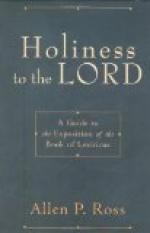(2) 2H_{2} + O_{2} = 2H_{2}O + 293,000 J., which means:
The matter and energy of 2 gram molecules of hydrogen, and the matter and energy of 1 gram molecule of oxygen, combine to the matter and energy of 2 gram molecules of water vapor and 293,000 joules, or units, of free energy.
For a hundred years the chemists thus saw only the material transformation as represented by equation (1), but overlooked and did not recognize the energy transformation coincident with the transformation of matter, though every time the experiment was made, the 293,000 J. of energy in equation (2) made themselves felt as flame, as heat and mechanical force, sometimes even explosively shattering the container in which the experiment was made. But the flame and the explosion appeared only as an incidental phenomenon without significance, as it represents and contains no part of the matter, but equation (1) gives the complete balance of matter in transformation. It was much later that the scientists realized the significance of the flame accompanying the material transformation as not a mere incidental phenomenon, but as the manifestation of the entity energy, permanent and indestructible, like matter, and the complete equation (2) appeared, giving the balance of energy as well as the balance of matter—that is, coincident with the transformation of matter is a transformation of energy, and both are indissoluble from each other, either involves the other, and both may be called different aspects of the same phenomenon.
But we have seen, when mental activity occurs in our mind, chemical and physical transformations accompany it, are coincident with it, and apparently indissoluble from it. Does there possibly exist the same relation between mental activity and the transformations of energy and matter, as we have seen to exist between the latter two? Are mental activity, energy transformation, and transformation of matter three aspects of the same biochemical phenomenon?
If for nearly a hundred years equation (1) was considered complete, until we found that one side was incomplete, and arrived at the more complete equation (2), the question may well be raised: Is equation (2) complete, dealing as it does with two entities, matter and energy, or is it not possibly still incomplete, and a third entity should appear in the equation, an entity “X,” as I may call it, differing from energy and from matter, just as energy and matter differ from each other, and therefore not recognizable and measurable by the means which measure energy or matter, just as energy cannot be measured by the same means as matter?
That is, the complete equation of transformation would read:
(3) 2H_{2} + O_{2} = 2H_{2}O + 293,000 J. + X, involving all three entities, matter, energy, and mind, pertaining, respectively, to the realm of chemistry, of physics, and of psychology, or possibly a broader science of which psychology is one branch.




